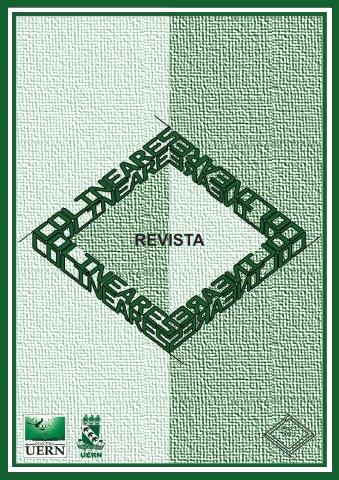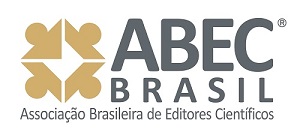LANGUAGE CONTACT: THE CODESWITCHING EMPLOYED AS A TOOL IN TEACHER"™S DAILY LINGUISTIC PRACTICES AND ITS IMPLICATIONS IN THE CONTEXT OF EDUCATION OF DEAF STUDENTS
Abstract
The education of the deaf, although much discussed and widely disputed, still faces difficulties. Many theorists argue that the problems within the area of education of the deaf are more related to traditional teaching methods of the schools and of the language used in this context rather than with their hearing. When we look at the history of deaf education, we realize that the determination of one language or another for the education of these students has implications with the creation and maintenance of representations about deafness and the education of these students. Therefore, this article intends to discuss about the languages (in use) that pervades this complex context of deafness sociolinguistically, and from this, emphasizing the need for more studies that focus on these issues. For this, the concept of codeswitching (GUMPERZ, 1982; AUER, 1995; MAHER, 2007; LIN, 2008; MENALI, 2009) appears in this article as a tool that can allow greater visibility for what (actually) can happens to these various languages that are in contact with the communication of the deaf, either in an interaction between the deaf, or within the deaf and non-deaf. Thus, the analysis of excerpts of material collected through an ethnographic research indicated that the concepts of codeswitching and codeconcurrency proved valid to visualize the language practices of this context.
Downloads
References
BARTON, D. Directions for literacy research: analysing language and social practices in a textually mediated world. Language and Education, 15:2-3, 92-104, 2001.
BRASIL. LEI nº 10.436 de 24 de abril de 2002. Dispõe sobre a Língua Brasileira de Sinais - Libras e dá outras providências. Disponível em: http://portal.mec.gov.br/seesp/arquivos/pdf/lei10436.pdf Acesso em: 26 de julho de 2009.
BRITO, L. F. Por uma gramática de Linguas de Sinais. Tempo Brasileiro: Rio de Janeiro. 1995.
CAVALCANTI, M.C. Multilinguismo, transculturalismo e o (re)conhecimento de contextos minoritários, minoritarizados e invisibilizados: o que isso tem a ver com a formação de professores e com professores em serviço? In.: MAGALHíES, M.C.C.;
FIDALGO, S.S.; SHIMOURA, A.S. (Orgs.). A formação no contexto escolar: uma perspectiva crítico-colaborativa. Campinas: Mercado de Letras; 2012. p.171-185.
______. Um olhar metateórico e metametodógico em pesquisa em linguística aplicada: implicações éticas e políticas. In: MOITA LOPES, LP.. (Org.) Por uma linguística indisciplinar, São Paulo: Parábola Editorial, 2006, p. 233-252.
CÉSAR, A.L.; CAVALCANTI, M.C. Do singular para o multifacetado: o conceito de língua como caleidoscópio. In: CAVALCANTI, M.C.; BORTONI-RICARDO, S.M. (orgs.) Transculturalidade, linguagem e educação. Campinas, SP: Mercado de Letras, 2007.
FUNG, C.H.-M. Code-blending in Early Hong Kong Sign Language: Some Preliminary Results from a Case Study. Anais do Annual Research Forum of the Linguistic Society of Hong Kong, Hong Kong, 2010. Disponível em: http://www.lshk.org/arf2010/doc/LSHK-ARF_2010_abstracts_2.0.pdf Acesso em: 11 de janeiro de 2014.
FUNG, C.H.-M.; TANG, G. A Universal Explanation for Code-blending and Codeswitching. Pôster apresentado no Theoretical Issues in Sign Language Research 11 (TISLR 11). UCL, London, UK, 2013. Disponível em: ftp://internalAdmin@137.189.85.186/publicationCP/159/_TISLR11_abstract_cb_hkslc an_.pdf Acesso em: 11 de janeiro de 2014.
GESSER, A. Um olho no professor surdo e outro na caneta: ouvintes aprendendo a Língua Brasileira de Sinais. 2006. Tese (Doutorado em Lingüística Aplicada) - Instituto de Estudos da Linguagem, Universidade Estadual de Campinas: Campinas, 2006.
GIORDANI, L.F. Encontros e desencontros da língua escrita na educação de surdos. In: LODI,A.C.B.; HARRISON, K.M.P.; CAMPOS, S.R.L. (orgs.) Leitura e escrita: no contexto da diversidade. Porto Alegre: Editora Mediação, 2004.
GÓES,M.C.R.; TARTUCI, D. Alunos surdos na escola regular: as experiências de letramento e os rituais da sala de aula. In: LODI, A.C.B.; HARRISON, K.M.P.; CAMPOS, R.R.L.; TESKE, O. (orgs.) Letramento e Minorias. Porto Alegre: Editora Mediação, 2002.
GUMPERZ, J.J. Conversational codeswitching. In: GUMPERZ, J.J. Discourse Strategies. Cambridge University Press, 1982.
HELLER, M.; MARTIN-JONES, M. Introduction: symbolic domination, education, and linguistic difference. In: HELLER, M.; MARTIN-JONES, M. (eds.) Voices of authority: education and linguistic difference. Westport, CT: Ablex, 2001.
KARNOPP, L.B.; PEREIRA, M.C.C. Concepções de leitura e de escrita e educação de surdos. In: LODI, A.C.B.; HARRISON, K.M.P.; CAMPOS, S.R.L. (orgs.) Leitura e escrita: no contexto da diversidade. Porto Alegre: Mediação, 2004.
LILLO-MARTIN, D.; QUADROS, R.M.; PICHLER, D.C. Mais do que a soma das partes: aquisição bilingue bimodal da linguagem – aspetos sintáticos. Cadernos de Saúde. V.6. Universidade Católica Portuguesa, 2013. Disponível em: http://www.cadernosdesaude.org/menu/docs/C_Saude_6_Especial_SLA.pdf Acesso em: 10 de janeiro de 2014.
LIN, A.M.Y. Code-switching in the classroom: research paradigms and approaches. In: KING, K.A.; HORNBERGER, N.H. (eds.), Encyclopedia of language and education. New York: Springer Science, 2008, p. 273 - 286.
LODI, A.C.B.; HARRISON, K.M.P.; CAMPOS, S.R.L. Letramento e Surdez: um olhar sobre as particularidades dentro do contexto educacional. In: LODI, A.C.B.;
HARRISON, K.M.P.; CAMPOS, S.R.L.; TESKE, O. (orgs.) Letramento e Minorias. Porto Alegre: Editora Mediação, 2002.
MAHER, T.M.. Do casulo ao movimento: a suspensão de certeza na educação bilíngue e intercultural. In: CAVALCANTI, M.C.; BORTONI-RICARDO, S.M. (orgs.) Transculturalidade, linguagem e educação. Campinas, SP: Mercado de Letras, 2007.
MARTIN-JONES, M.; ROMAINE, S. Semilingualism: A Half Baked Theory of Communicative Competence. In: Applied Ling., v. 7, 1986, p. 27-38.
MENALI, D.S. Considerações sobre o comportamento discursivo de uma professora surda bilíngue. 2009. Monografia (Licenciatura em Letras-Português) – Instituto de Estudos da Linguagem, Universidade Estadual de Campinas: Campinas, 2009.
NOGUEIRA, A.S. Representações acerca do trabalho da leitura e da escrita em grupo de apoio a crianças surdas. 2010. 122 p. Dissertação (Mestrado em Linguística Aplicada) – Instituto de Estudos da Linguagem, Universidade Estadual de Campinas, Campinas, SP, 2010.
NOGUEIRA, A.S.; SILVA, I.R. A construção das identidades surdas no contexto da clínica fonoaudiológica. Revista Intercâmbio, volume XVII: 69-82, 2008. São Paulo: LAEL/PUC-SP. ISSN 1806-275x
SANTANA, A.P.; BERGAMO, A. A cultura e identidades surdas: encruzilhada de lutas sociais e teóricas. Educação e Sociedade, vol. 26, n.91, 2005.
SILVA, I.R. Quando ele fica bravo, o português sai direitinho; fora disso a gente não entende nada: o contexto multilíngue da surdez e o (re)conhecimento das línguas no seu entorno. Trabalhos de Linguística Aplicada, Campinas, 47(2): 393-407, jul./dez. 2008.
Downloads
Published
How to Cite
Issue
Section
License
Copyright (c) 2014 Aryane Santos Nogueira, Ivani Rodrigues Silva

This work is licensed under a Creative Commons Attribution-NonCommercial-ShareAlike 4.0 International License.






